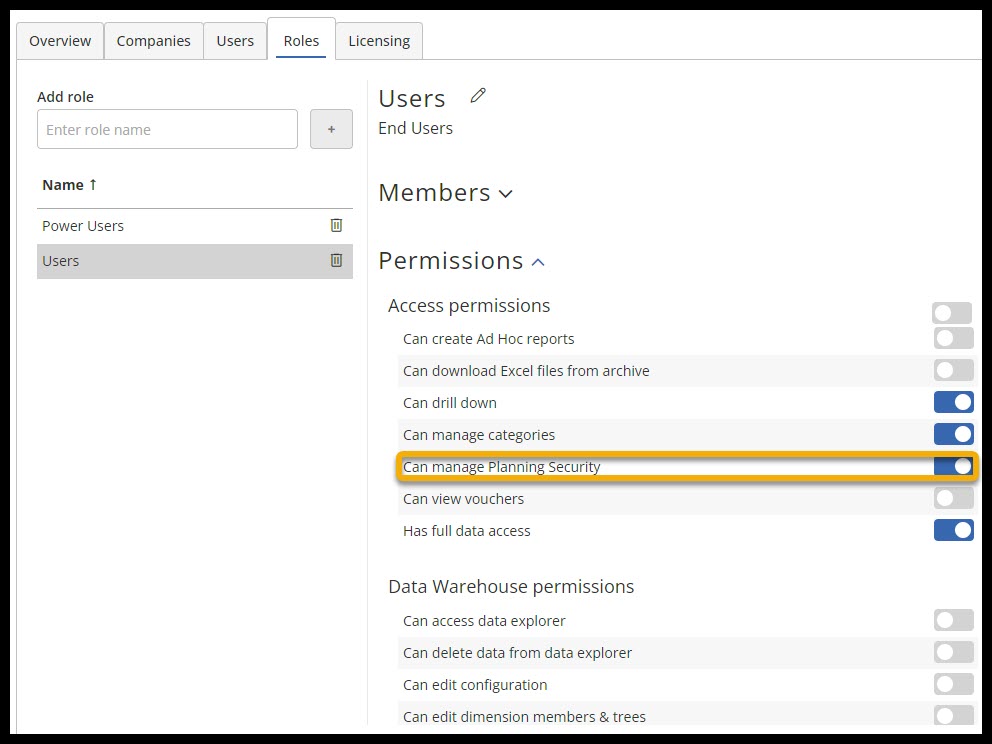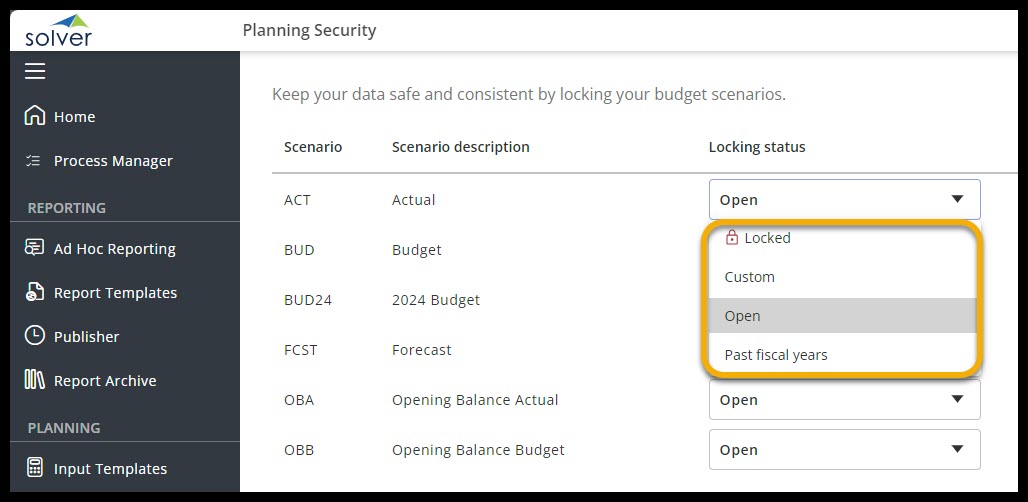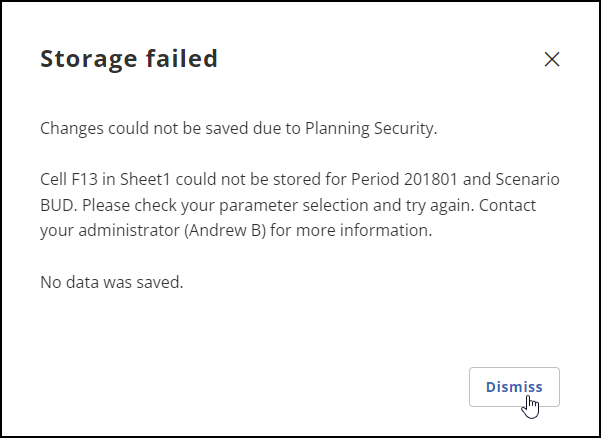Planning Security allows you to prevent storage to specific periods and/or scenario combinations from within the Planning features found within Solver for your tenant. Once enabled, your security rules apply to
- Input templates
- Workflows & Assignments
- Input Flows
These rules do not apply to data imports via integrations or modifications that can be done via business rules.
Highlighted Features and Functionality
Planning Security comes with the following features
- Assign specific users to define Planning Security rules.
- All scenarios allow for storage by default.
- All newly created scenario codes are automatically added and storage is enabled.
- Security rules are defined at a per-tenant level.
- Data is not saved if any cell across all pages of a workbook violates a security rule
Menu and Interface
The planning security menu can be found by clicking on the Settings menu and choosing Planning Security.
This will bring up the page shown below that provides the user with a list of all scenarios that have been added to their tenant via the Data Warehouse and with security level options for each scenario.

Configure Planning Security
As mentioned above, by default all scenarios can be stored to from any of the Planning features found in Solver. To start restricting scenarios, users must
- Grant permissions to change Planning Security
- Define the rules
Grant Permissions
The first step in configuring Planning Security is to enable “Can manage Planning Security”. Your administrator can assign this permission to select users of a specific tenant via the Administration menu.

For more information on how to configure Permissions, please reference this article.
Defining Planning Security Rules
Once “Can manage Planning Security” has been granted to you, a new menu will appear under Settings called Planning Security. Changes that are made to the screen immediately take effect.
- Click Planning Security.
- A list of all Scenario codes will appear and their current status.
- Find the scenario you are looking to modify.
- There are four options

- Open: Default option, users can store to this scenario code for any period
- Locked: the selected scenario code is locked from storage to any period
- Past fiscal years: Prevents storage to prior fiscal years. Current and future fiscal years, as configured in your tenant will allow for storage.
- Custom: Restrict access to periods related to the scenario code. Support syntax is
- Single period: YYYYMM
- Mutliple Periods: YYYYMM,YYYYMM,…,YYYYMM
- Range: YYYYMM:YYYYMM
Type in the various periods you want to restrict and hit enter. Changes are automatically saved. Repeat the above steps for the scenarios that must be restricted.
Template Design Concepts
Storage security is analyzed at the time that save is clicked. Storage security is looking at cells with budgeting settings defined. All other cells, that may contain “locked” data, will not be referenced by storage security.
So for example, if your template is designed with
- Actuals that are Locked and Budget that is open to storage
- storage settings only on the budget data
This template will store.
However if you have a template two budget versions, Budv1 and Budv2 and both have storage settings but budv1 is locked, storage will error out
Additionally, Planning security is looking at the budget settings and not the parameters that the report is being ran for. It is important to note that the parameters a report is being ran for may not necessarily be the parameters that the template is storing back to.
End User Experience
When using an input template or assignment, upon save, the application will validate against the storage rules. If the application detects that the template is storing to a locked scenario and period, the users will receive an error message upon save.
It is important to note that templates may be storing to scenarios and periods that are not shown to end users. Storage security is looking at the information that is being stored in the template and not necessarily what the template is being run for.

The error message includes the administrator that last modified the security rule that is preventing you from storage. You can reach out to this user to help you, should you need to store budget data.